When it comes to your Husqvarna locking differential, there are a few things that could go wrong. Here are some of the most common Husqvarna Locking Differential Problems that you might encounter:
- The locking mechanism may not engage properly. This can be caused by a variety of factors, including dirt or debris in the mechanism, improper lubrication, or even wear and tear. If you suspect this is the problem, take a look at the manual to see how to properly clean and lubricate the locking mechanism.
- The locking differential may not disengage properly. This can also be caused by dirt or debris in the mechanism, but it can also be due to faulty cables or linkage. If you think this might be the problem, again consult your manual for troubleshooting steps.
- The differential may make noise when it’s engaged. This is usually due to incorrect installation of the driveshaft or gears, so if you hear this noise check those components first. It could also be caused by excessive wear on the gears themselves, so if all else fails consider replacing them entirely.
- There may be leaks coming from the differential housing unit itself. These leaks are usually due to bad seals or gaskets, so replacing those should fix the problem (again, consult your manual for specific instructions). If you’re having any problems with your Husqvarna locking differential, don’t hesitate to take it to a qualified repair shop for further diagnosis and repairs.
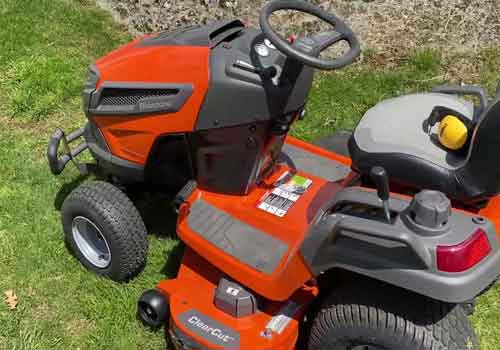
Husqvarna Locking Differential Problems FIX
1. The locking mechanism may not engage properly
If this problem arises, the first step is to check for debris or other obstruction. The locking mechanism needs to be clear of such things in order for them to function properly.
The second step is to make sure that the angled edge of the axle is facing outwards. If this is done, and it still does not engage properly, a new locking mechanism will be needed.
If the locking mechanism does engage properly but disengages when power is applied, a problem with internal gears may arise. This problem may come in one of two forms; hairline cracks in the differential casing, or heat fatigue. If this happens, a new differential casing needs to be purchased and installed.
Husqvarna made a small repair to the original differential casing on the XP1000 and XP600 models. This was to “prevent heat fatigue” and to “improve performance, increase gear life and improve gear efficiency.”
2. The locking differential may not disengage properly
If this problem arises, the oil in the differential casing is too low. To remedy this condition, oil should be added to the differential casing.
If this problem is not solved, the general maintenance of the machine will need to be done correctly.
The XP100 and XP600 models have a single front output shaft that turns around what is known as an internal hub or spider gear. This hub allows the axle to pivot slightly on one axis and also allows for some element of lateral movement.
3. The differential may make noise when it’s engaged
If this problem arises, the differential needs to be greased. To do this, the lock must be disengaged and the axle unlocked. The hub and bearings must then be removed from the differential casing, and grease needs to be applied inside of it.
A thin nozzle is recommended for this task in order to minimize any accidental sealing of lubricant inside the casing.
The axle can then be reassembled, and the locking mechanism reengaged and locked in place without a problem.
4. There may be leaks coming from the differential housing unit itself.
If this problem arises, the differential housing unit needs to be replaced. Husqvarna has made several service bulletins related to the differentials in their products.
The XP1000 and XP600 machines have a totally enclosed differential casing. There is no access to this part of the machine for repair or inspection.
However, if serious damage does occur, it can be repaired by replacing the damaged casing itself. This is not a simple repair procedure by any means, and should only be done if absolutely necessary.
Should the Diff Lock Be on Or Off?
There is no definitive answer to this question – it depends on the situation. If you are driving in slippery or off-road conditions, then engaging the diff lock will give you more traction and control. However, if you are driving on dry pavement, then you might want to leave the diff lock disengaged for better handling.
Ultimately, it’s up to the driver to decide when to engage or disengage the diff lock based on road conditions.
Why Does My Husqvarna Riding Mower Keep Shutting Off?
If you’re having trouble with your Husqvarna riding mower shutting off, there are a few possible reasons. First, check the fuel level and make sure there’s enough gas in the tank. If the tank is empty or nearly empty, fill it up and try again.
Another possibility is that the air filter is dirty and needs to be replaced. A dirty air filter can restrict airflow to the engine, causing it to overheat and shut down. Inspect the air filter and replace it if necessary.
Finally, make sure that all of the blades are installed correctly and are not loose. Loose blades can cause vibration that will eventually lead to the engine shutting off. Check all of the bolts holding the blades in place and tighten them if needed.
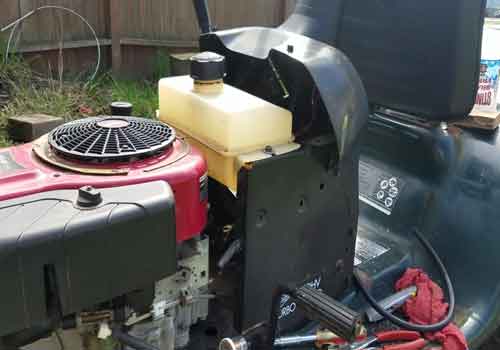
Read More About Husqvarna Yth18542 Transmission Problems
How Do You Unlock a Differential Lock?
Differential locks are a great way to keep your vehicle from slipping and sliding around on slippery surfaces. They work by locking the wheels together so that they all turn at the same speed.
This prevents the inside wheel from spinning faster than the outside wheel, which can cause your vehicle to lose traction.
Differential locks can be manually or electronically activated, and most vehicles have them built-in these days. To manually activate a differential lock, you will need to engage the clutch and shift into neutral. Then, apply pressure to the brake pedal while turning the locking knob or lever until you hear it click into place.
Once it is locked, you can release the brake pedal and slowly accelerate as normal. Be sure not to take any sharp turns while the differential lock is engaged, as this can damage your tires or even cause your vehicle to roll over.
If your vehicle has an electronic differential lock, there will usually be a button or switch somewhere on the dash that you can press to engage it.
Once it is engaged, follow the same procedures as above for manual activation. Remember that you should only use a differential lock when absolutely necessary, as engaging it too often can wear down your brakes and tires prematurely.
When the Differential Lock on Your Tractor is Activated It?
Differential locks are a common feature on many modern tractors. When activated, they serve to lock the rear wheels together so that they turn at the same speed. This can be useful in a number of situations, such as when driving on slippery surfaces or when transporting heavy loads.
There are two main types of differential locks: those that are operated manually and those that are operated automatically.
Manual locks are usually engaged by means of a lever or switch, while automatic locks engage themselves when one of the rear wheels starts to slip. Differential locks can be very useful, but they should be used with caution.
If engaging a manual lock, make sure not to overdo it – only engage it enough to achieve the desired effect. And if you’re using an automatic lock, be aware that it may engage unexpectedly if one of the wheels slips too much.
In either case, once the differential lock is engaged, take care not to come to sudden stops or make sharp turns, as this could cause the tractor to tip over.
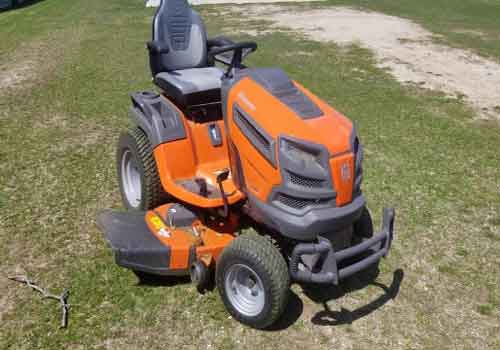
Hydrostatic Transmission With Locking Differential
Hydrostatic Transmission With Locking Differential: In a hydrostatic transmission, power is transferred from the engine to the wheels by hydraulic fluid under pressure.
This type of transmission is often used on lawnmowers and other heavy equipment because it can provide an infinite range of speeds and torque.
A locking differential is often used in conjunction with a hydrostatic transmission. This device allows both wheels to rotate at the same speed, even if one wheel is slipping. This can be helpful when driving on slippery surfaces or when climbing hills.
Tuff Torq Differential Lock
If you’re an avid gardener with a lawn tractor, you’ve probably noticed that sometimes your wheels slip when you’re trying to turn on wet grass. This can be really frustrating, and it’s one of the main reasons people don’t use their lawn tractors as much as they could. But there’s a solution – Tuff Torq differential lock.
Differential lock is a feature on some lawn tractors that allows both wheels to turn at the same speed, even if one is slipping.
This means that you’ll be able to make turns without your wheels slipping, which will make mowing your lawn a lot easier and more enjoyable. There are a few different brands of differential locks, but Tuff Torq is one of the most popular.
It’s easy to install and it doesn’t require any special tools or knowledge. You can find Tuff Torq differential locks online or at most lawn tractor dealerships.
Husqvarna Diff Lock Switch
If you’re a Husqvarna rider, then you know the importance of having a diff lock switch. This little switch is responsible for locking the front and rear wheels together, giving you extra traction when you need it most. Here’s a quick rundown on how the diff lock switch works and what it can do for you.
When the diff lock switch is engaged, the front and rear wheels are locked together. This gives you extra traction, especially when riding in slippery conditions. It’s also helpful when climbing hills or pulling heavy loads.
To engage the diff lock switch, simply flip it up with your thumb. You’ll feel a click when it’s locked into place. To disengage, just flip it back down.
It’s that easy. The diff lock switch is a great way to give yourself an extra bit of traction when you need it most. So if you’re ever in a situation where you could use some extra help, don’t hesitate to give it a try.
Cub Cadet Locking Differential
There are many reasons to love Cub Cadet lawnmowers. They’re durable, they start reliably, and they cut grass well. One of the best features of Cub Cadets is their locking differential, which allows you to mow in reverse without having to turn around.
This is a great feature if you have a large lawn or if you need to mow around obstacles. It’s also handy if you want to make sure you don’t miss any spots when mowing. To engage the locking differential on a Cub Cadet lawnmower, simply push the lever down with your foot while holding down the brake pedal.
Then, put the mower in reverse and release the brake pedal. The wheels will lock into place and allow you to mow backward without having to turn around.
John Deere Riding Mower With Locking Differential
If you’re in the market for a new riding mower, you may be wondering what features are available and which ones are right for you. One feature that may be important to consider is a locking differential. Here’s what you need to know about this feature on John Deere riding mowers.
A locking differential allows both wheels on an axle to rotate at the same speed. This can be helpful when mowing on uneven terrain or in wet conditions. It can also help if you need to turn sharply around corners.
To engage the locking differential, there is usually a lever located near the seat of the mower. Once engaged, both wheels will rotate at the same speed regardless of any difference in traction between them. While a locking differential can be helpful in certain situations, it’s not necessary for everyone.
If you primarily mow on level ground and don’t have issues with traction, then you probably won’t need this feature. However, if you often mow in wet grass or hilly terrain, a locking differential could be a valuable addition to your mower.
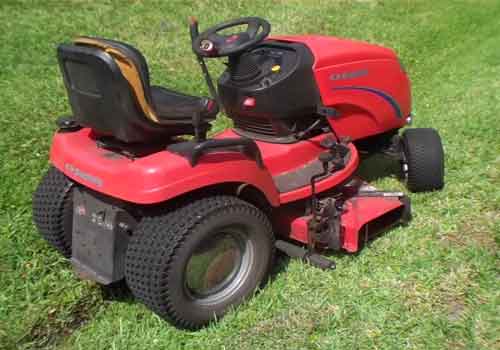
Husqvarna Ts354Xd Problems
If you’re a homeowner with a large lawn, you know that a quality lawn tractor is essential to keeping your grass looking its best. The Husqvarna TS354XD is one of the best riding mowers on the market, but it’s not without its problems. Here are some common issues that owners have reported:
1. The deck height adjuster knob can break easily. 2. The mower may pull to one side while you’re mowing. 3. The engine may stall if you try to engage the blades while the engine is idling.
4. Some owners have reported that the mower leaves streaks of uncut grass in their lawns. 5. Others have said that the blade belt tends to come off easily.
Husqvarna Ts354D Vs Ts354Xd
There are a lot of different lawnmowers on the market, and it can be tough to decide which one is right for you. If you’re trying to decide between the Husqvarna TS354D and the TS354XD, here’s what you need to know. The Husqvarna TS354D is a gas-powered lawn mower with a 21.5 horsepower engine.
It has a 54-inch cutting deck and can mulch bag, or side discharge your grass clippings. It features hydrostatic transmission for easy speed control, and it has adjustable cutting heights ranging from 1.5 to 4 inches.
The Husqvarna TS354XD is also a gas-powered lawn mower, but it has a slightly larger engine at 24 horsepower.
Its cutting deck is also slightly larger at 60 inches, and like the TS354D it can mulch bag, or side discharge your grass clippings. It also features hydrostatic transmission and adjustable cutting heights ranging from 1.5 to 4 inches. So which lawn mower should you choose?
If you have a large yard or if you’ll be doing a lot of heavy-duty mowing, then the Husqvarna TS354XD is probably the better choice for you. But if you have a smaller yard or if you don’t need all that extra power, then the Husqvarna TS354D will do just fine.
Husqvarna Ts354D Review
The Husqvarna TS354D is a great lawn tractor for those who are looking for a durable and powerful machine. This lawn tractor is powered by a 24 hp Briggs & Stratton engine and has a hydrostatic transmission, which makes it easy to operate. The cutting deck on this tractor is 54 inches wide, making it ideal for large lawns.
The Ts354D also comes with a mulching kit and an adjustable seat, so you can be comfortable while you’re working.
Specification
| Model | Husqvarna Yth18542 |
| Engine | 18.5HP |
| Steering | Manual steering |
| Manufacturer in | 2017 |
| Chassis | 2WD |
| Fuel Capacity | 25L |
| Weight | 419kg |
| Battery | 12V |
| Speed | 3600rpm |
| transmission | Hydrostatic |
| Fuel | Diesel |
Why does my Husqvarna mower have a weak transmission?
A weak transmission generally manifests itself in the form of a very rough feeling or “jerky” transmission action when going from full power to no power.
The transmission works on the same principle as most other transmissions. It has a main drive shaft that transfers power from the engine to the transmission, which then splits out to all of the other drive shafts.
Each of these drive shafts has an internal gear as well as an external gear attached to them. When engaged, each of these gears spins at a different rate.
Why does my Husqvarna mower not sit level?
After mowing grass for a while, the rear of the mower will often tilt down. The machine will then have to be pushed from behind in order to sit level again. This is a very common problem with many different types of mowers and lawn care tools.
One reason for this is that there may be some type of design flaw in the cut system. Other possible causes include one or more loose parts.
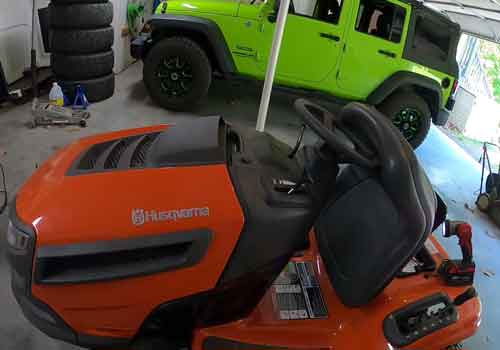
Which K66s have a differential lock?
Although the 66 series are designed to have a differential lock, it is not a standard feature. For example, the K66 has no differential lock.
The whole area of the mower housing opens up for easy transporting, hence the shape of the mower. The advantage: same space inside for everything as with a separate mower-cutter unit. The disadvantage – is very limited wheelbase and chassis width; at least in comparison with modern machines.
The Husqvarna K66 (and the Kvx66, which is the same mower with a different paint job) was the first ever side-discharge mower and it was released in 1966.
It had only one model type for many years, then in 1998 a new high-end model, the XP1000 was added. Two years later, in 2000, a “lower level” version called the XP600 was added and also a G model (2002).
What type of transmission is used in Husqvarna mowers?
The K46 has a KRC3-3 electronic speed control or bandsaw drive system, which was the first Husqvarna mower to feature that system. This drive system is an automatic transmission with three bandsaw or cogged gears that the operator can control manually.
The transmission is equipped with three cogged gears, each driven by a separate motor, and these three sets of cogs can be operated independently for great power adjustments.
FAQ
Is a locking differential Good?
Yes and No. It depends on the terrain in which you are mowing. If you do a lot of turning and going up hills, you might find a locking differential a little better. If your mower is sitting on flat ground, it’s probably not going to make much difference.
Can you turn on the diff lock while driving?
Yes, you can. The lever will lock the rear wheels when mowing, but it will not cause any problems with the front wheels. You can also decide whether or not to use the diff lock while driving by using the throttle control or shift lever.
Can you offroad without locking the differential?
Yes, you can without the diff lock. However, if you are driving over bumpy terrain, a locked differential will make it easier to keep your wheels straight and not get bucked around while you’re driving your yard care machine.
Husqvarna gt48xls rear differential actuator diagnose as not working
Conclusion
If you own a Husqvarna riding lawnmower, you may have experienced Husqvarna Locking Differential problems with the locking differential. This is a common issue that has been reported by many users. The problem seems to be caused by a faulty design and poor quality control.